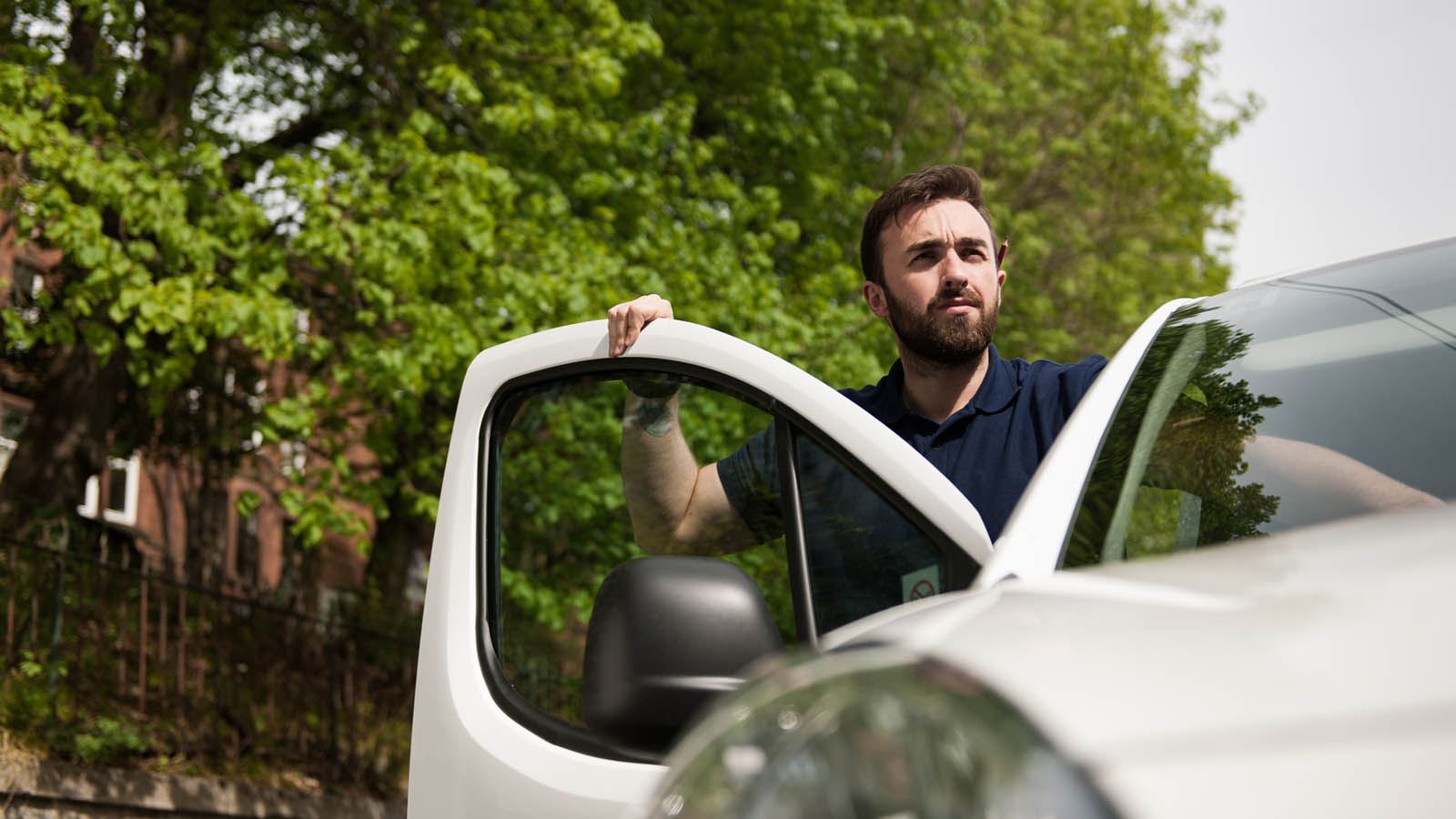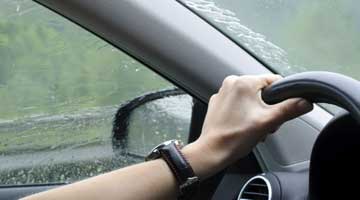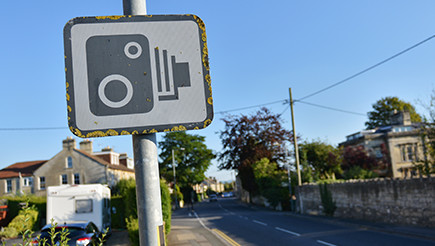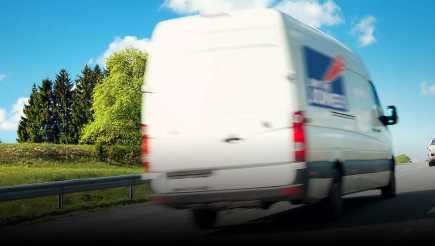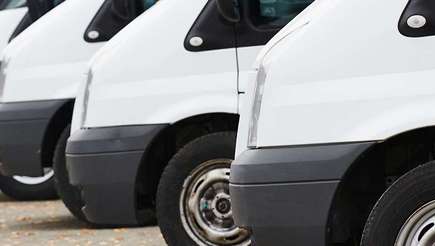As more COVID-19 lockdown restrictions are lifted, we’re getting a glimpse at what our ‘new normal’ will look like with many people going back to work for the first time in months. How people work and how businesses operate will change for the foreseeable future.
Trades people in England are being encouraged to go back to work if it’s safe to do so, and COVID-secure retailers were permitted to open from the 15 June. That means more van drivers will be back out on the road, and for many it’ll be the first time they’ve been to work since lockdown began in March.
From essential safety checks to disinfecting your van and advice on social distancing in vehicles, AXA has got you covered. Our guide covers everything you need to know about getting back out in your van safely.
Essential van safety checks
If you haven’t been using your van regularly during lockdown, it’s important to carry out some basic safety checks before you set off for work. If you’re not sure where to start, just remember to check the van’s FLOWER.
- Fuel
- Lights
- Oil
- Water
- Electrics
- Rubber
Fuel
This might sound obvious, but it’s easy to forget and you don’t want to be caught short when you’re out and about. It’s especially important to be prepared with your trips to the garage during the coronavirus pandemic because you need to be armed with extra hygiene precautions when filling up.
Lights
Check all your van’s lights are working before setting off. Remember, it’s important to look out for cracks in the glass, too. Just turn on your headlights and hazards then walk around your van to check they’re all working. To check your brake lights, you’ll need to ask someone else to help you check while you press the brake pedal.
Oil
To check your oil level, simply remove the dipstick and wipe it clean. Then, re-insert it until it clicks back into place. Remove the dipstick again to check the oil level is somewhere between the two lines on the dipstick. If your oil level is below the bottom line, you should top up immediately as low oil levels can damage your engine. If you’re not sure which oil to use, check your vehicle manual or the manufacturer’s website.
Water
While you’re under the bonnet, you should check the other fluids your van needs to run properly; engine coolant and screen wash. You can check the engine coolant through the side of the reservoir and top it up with a little water if it’s low. For your windscreen, just top it up with some ready-made solution or water if you don’t have any.
Electrics
If your van has been left unattended for a while, it’s possible that the battery has gone flat. You might want to check the battery the night before you start work – a flat battery is the last thing you want to deal with on a Monday morning!
Rubber
With tyres being sighted as one of the most common causes of vehicle breakdowns, it’s important to check your tyres regularly. Before setting off, you should check your tyre pressure, tread death, wear and tear and side wall damage.
What if my van needs an MOT or a service?
If your van’s MOT expired on or before the 29 March 2020, you must book an MOT unless you’re shielding or you or someone you live with has coronavirus symptoms. MOTs due after the 30 March 2020 have been given a 6-month extension. That means you can continue to drive your van as long as your van is roadworthy. If you don’t think your van is roadworthy, or you’re not sure, it’s always a good idea to err on the side of caution and find alternative travel arrangements.
For the latest information on when it’s safe to take your vehicle for an MOT, visit the government’s website here.
When it comes to servicing, although it isn’t a legal requirement, the van’s warranty can be compromised if it isn’t fully serviced in the specific time frames. Not having your van serviced according to manufacturer recommendations could also affect your van insurance and your ability to make a claim. For newer vans, some dealerships will arrange to collect and deliver your van directly to and from your home. In any case, it’s always a good idea to check with the dealership you bought the van from or contact the manufacturer.
Social distancing in vehicles
Social distancing simply means keeping a safe distance (current guidance is 2 metres) away from other people and avoid all physical contact such as hand shaking.
The government guidance on social distancing in vehicles currently advices against multiple-occupancy vehicles and advises against people sharing vehicles. If this isn’t possible, people should keep a 2-metre distance inside the vehicle and consider additional safety and hygiene measures if this isn’t possible.
So, if you can’t work on your own and social distancing inside your van isn’t possible, here are things you can do to keep you safe at work.
- Less people - Keep the number of people in the vehicle to an absolute minimum.
- Stay away - People in the vehicle should stay as far away from each other as possible.
- Open windows - Ensure vehicles are well-ventilated (e.g. opening the windows).
- Clean and disinfect - Keep vehicles clean and disinfect areas the driver and passengers have touched.
- Work in a ‘fixed pair’ - Having a fixed working rota will reduce the number of people workers are coming in to contact with.
- Same person re-fuels - The same person should be responsible for re-fuelling the vehicle.
- Social distancing signs - Have clear signage and floor markings to outline social distancing measures
- Sit side-by-side - Sit side-by-side in the vehicle rather than face-to-face where possible.
- Perspex screens - Consider a physical screening between people (as long as it doesn’t compromise safety e.g. driver visibility).
Social distancing for delivery drivers
Orders should be taken online or by phone, rather than in the business premises. The person taking the order should make sure the customer is aware of the social distancing delivery process to avoid any confusion which could put the customer and the delivery driver at risk.
Delivery drivers shouldn’t physically hand the goods over to the customer. Instead, there should be a set drop-off point agreed in advance. After ringing the doorbell, the delivery driver should maintain a safe distance from the door and oversee the delivery of the goods.
Delivery drivers should wash their hands using soap and water for at least 20 seconds as regularly as possible and use hand sanitiser after each delivery.
How to clean and disinfect your van: Tips and advice
The World Health Organisation (WHO) say COVID-19 can survive for up to 72 hours on plastic and stainless steel. That’s why it’s more important than ever to make sure your van is cleaned and disinfected regularly.
Toyota recently published advice on the 40 most commonly touched areas of a vehicle that you’ll need more attention when you’re cleaning your van. The most obvious areas are the internal and external door handles, steering wheel, radio or multimedia system and the seatbelts, but you’ll also need to consider the cupholders, headrests and heating controls.
The most commonly touched areas of a vehicle
| Exterior door handles | Seat adjust buttons | Multimedia screen | Rear-view mirror | Wheel valves |
| Door frame and roof | Steering wheel | Central air vents | Interior lights | Dipstick |
| Interior door release | Horn | Heating controls | Grab handle | Washer cap |
| Window switches | Control stalks | Glovebox | Key | Bonnet lid |
| Interior door handle | Driver air vents | Log book | Head rests | Boot floor tab |
| Door pocket | Dashboard | Boot-close button | Seat pockets | Parcel shelf |
| Seatbelts | Power button | Cupholders | Fuel cap | Oil cap |
| Seatbelt clips | Gear shift | Rear central tab | Boot lid | Central storage compartment |
Cleaning and disinfecting your van: Top tips
- Tidy and clean your van first, then disinfect it
- Use disposable cloths wipes and towels wherever possible. If you can’t, wash everything after every use at 60℃
- For cleaning, soap and warm water is a great choice and because it’s suitable for most surfaces
- When disinfecting, avoid products with hydrogen peroxide and bleach because it can damage certain surfaces. Use alcohol-based products (e.g. isopropyl) instead.
- Pay extra attention to the commonly touched areas of your vehicle
Even if your van’s interior and exterior is cleaned and disinfected, it’s always important to remember to wash your hands before getting in and out to reduce the risk of spreading infection.
For more information about social distancing inside vehicles, you should check out the government's website. With information changing on a daily basis, it’s worthwhile check what the latest advice is before you set off in your van.
